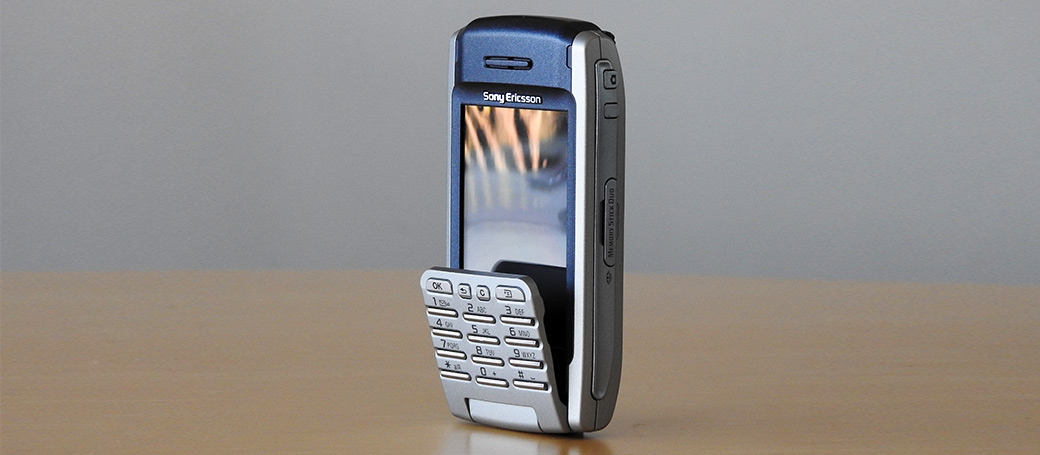
These days, it seems perfectly normal that a smartphone is no longer seen as just an everyday companion or entertainment device, but also as an essential business tool for mobile work. But even way back in the early years of mobile phone development, there were a few models that offered more than just calling, a few games or WAP internet. Without doubt, the Sony Ericsson P900 belongs to this category.
Shortly after the turn of the millennium, it claimed to be the mobile office for the busy businessmen and women of the day. With its concept, but also with an extremely hefty price for the time, its launch in 2003 instantly stood out from the mass of ordinary mobile phones. With this exceptional position, the Sony Ericsson P900 has of course gained a place in our smartphone museum – a museum which we are continuously expanding. Make sure you follow developments here in this blog.
The Smartphone Ancestral Line – The Sony Ericsson
One of the largest displays on the market, a removable, physical keyboard, an integrated stylus, lots of storage memory and a desktop USB sync station… With this wide range of features, which are seen in today’s workhorses such as the Samsung Galaxy Note series, the Sony Ericsson P900 was the dream of every mobile phone enthusiast. It also allowed the business community to work mobile at levels that at best were only matched by the Nokia Communicator.
The competition from Finland was a bit longer and thicker and above all significantly heavier than the P900, while both devices had roughly the same price tag. At about €800, the Sony Ericsson P900’s selling price was at that time already at the level of today’s high-end smartphones.
Typically Sony
While later handsets showed less and less manufacturer-specific features besides their design – the typical Xperia look for example, Sony took a really different approach with the P900 and other models at this time. This started with the operating system. The Sony Ericsson worked with Symbian UIQ, a special Symbian variant designed for graphical user interfaces. This found its way into only about 20 mobile phone models at the time – and almost all were either Sony Ericsson or Motorola phones. From the start, UIQ was just a shadow of another Symbian system – Symbian S60, whose enormous market penetration at the time was mainly due to Nokia being the market leader.
Symbian UIQ, which has been maintained by Sony Ericsson and Motorola over several years, didn’t reach the same levels of popularity, so mobile phones like the P900 couldn’t really break out of their niches. Another Sony feature from that time however, maintained its popularity over many years – the scroll wheel. This was an alternative to the typical rocker switches and control points which served as the central control elements for other mobile manufacturers at the turn of the millennium.
By 2006 though, the scroll wheel era had ended at Sony. And about the same time, the end came for the P900, or to be more precise the P910 and P990 successors which for example were at the early Wi-Fi connectivity stages. Shortly after, the Xperia era would begin at Sony Ericcson. This was ushered in by the Xperia X1, which was designed once again as a mobile office with its retractable QWERTY keyboard and Windows Mobile OS. The X2 successor continued this approach, before Sony Ericsson switched to the Android operating system with the Xperia X8 and decided to abandon the “mobile work” concept. From then on, their mobile phones where squarely aimed at entertainment and everyday productivity.
Roundup
Back in 2003, when the Sony Ericsson P900 was introduced, using a smartphone for mobile work was not really on anyone’s radar. Sony Ericsson, with its hybrid of a classic mobile phone and a modern touchscreen device showed what could be possible for the future of mobile productivity. The Sony Ericsson P900 brought everything that a high-end model could offer back then – a display with 65,536 colors, multitasking and a huge 2.9 inch display under a removable cover. Once opened, this turned the P900 into a classic PDA including a calendar, stylus operation, BlackBerry-like e-mail functionality and a fast USB connection to the desktop via the sync station.